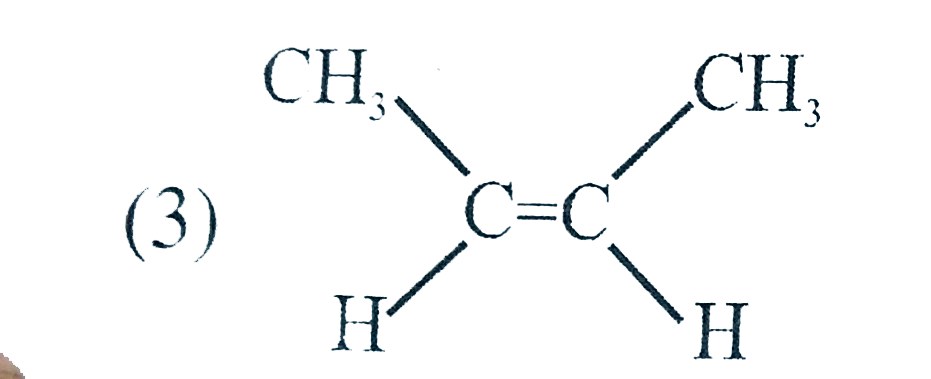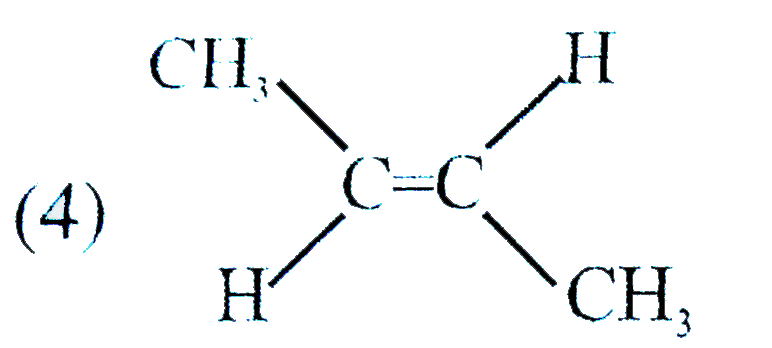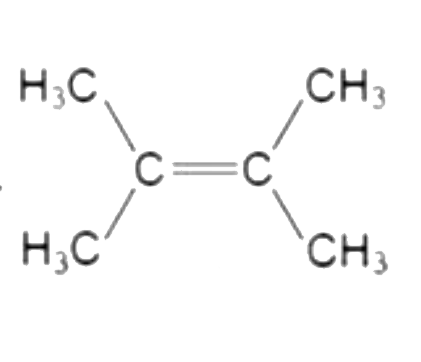CH3−C∣ClH−C∣ClH−CH3(i)Alc.KOH−−−−−−−−−−→(ii)NaNH2A (major) H2−−−−−−−→Pd/CaCO3B
CH3CH2−CH=CH2
CH2−CH2−CH2−CH3


The correct Answer is:C
To solve the given question, we need to follow the steps of the reactions described. Let's break it down step by step.
Step 1: Identify the Initial Compound
The initial compound is given as:
CH3CCl(CHCl)CH3
This compound has two chlorine atoms attached to the carbon chain.
Step 2: Reaction with Alcoholic KOH
The first step involves the reaction of the compound with alcoholic KOH. Since alcoholic KOH is used, it promotes an elimination reaction (dehydrohalogenation).
1. Elimination Reaction:
- One chlorine atom (Cl) will be removed from the alpha carbon, and a hydrogen atom will be removed from the beta carbon.
- This results in the formation of a double bond between the two carbons.
The product after this step (let's call it A) will be:
CH3C=CHCH3
This represents a compound with a double bond between the two carbons.
Step 3: Reaction with NaNH2
Next, the product A undergoes a reaction with sodium amide (NaNH2), which acts as a strong base.
2. Formation of Alkyne:
- NaNH2 will deprotonate the hydrogen adjacent to the double bond, leading to the formation of a triple bond.
- The product after this reaction (let's call it B) will be:
CH3C≡CCH3
This is a symmetrical alkyne.
Step 4: Hydrogenation with Pd/CaCO3
The final step involves the hydrogenation of the alkyne using hydrogen gas (H2) in the presence of palladium on calcium carbonate (Pd/CaCO3), which acts as a Lindlar catalyst.
3. Reduction of Alkyne to Alkene:
- The alkyne will be partially hydrogenated to form a cis-alkene.
- The product after this step (let's call it C) will be:
CH3C=CHCH3
This is a cis-alkene.
Conclusion
Thus, the final products A and B are:
- A: CH3C≡CCH3 (an alkyne)
- B: CH3C=CHCH3 (a cis-alkene)
The correct answer to the question is option 3.
The initial compound is given as:
CH3CCl(CHCl)CH3
The first step involves the reaction of the compound with alcoholic KOH. Since alcoholic KOH is used, it promotes an elimination reaction (dehydrohalogenation).
- One chlorine atom (Cl) will be removed from the alpha carbon, and a hydrogen atom will be removed from the beta carbon.
- This results in the formation of a double bond between the two carbons.
CH3C=CHCH3
This represents a compound with a double bond between the two carbons.
Next, the product A undergoes a reaction with sodium amide (NaNH2), which acts as a strong base.
- NaNH2 will deprotonate the hydrogen adjacent to the double bond, leading to the formation of a triple bond.
- The product after this reaction (let's call it B) will be:
CH3C≡CCH3
This is a symmetrical alkyne.
The final step involves the hydrogenation of the alkyne using hydrogen gas (H2) in the presence of palladium on calcium carbonate (Pd/CaCO3), which acts as a Lindlar catalyst.
- The alkyne will be partially hydrogenated to form a cis-alkene.
- The product after this step (let's call it C) will be:
CH3C=CHCH3
This is a cis-alkene.
Thus, the final products A and B are:
- A: CH3C≡CCH3 (an alkyne)
- B: CH3C=CHCH3 (a cis-alkene)
Topper's Solved these Questions
Similar Questions
Knowledge Check
CH3−CH∣Br−CH2−O∣∣C−CH3N2HO(4),ϴOH−−−−−−−−−−−→Δ Product:
A B
B C
C D
D
Give IUPAC names of the following compounds:
(i) CH3−C∣ClH−C∣ CH3H−C∣ CH3H−CH2OH
(ii) CH3−C∣ CH3H−O−CH2CH3

View Solutionname the following reactions(i). R−CH∣OH−CH2COOHNaHCO3−−−−−→ΔR−CH∣OH−CH2−H
(ii). R−CH∣NO3−CH2COOHNaHCO3−−−−−→ΔR−CH∣NO3−CH2−H
(iii) R−C∣∣O−CH2COOHΔ−−→R−C∣∣O−CH3
View SolutionCH3−CH∣Cl−CH∣CH3−CH3+Alcoholic KOHΔ−−→
(A) major + B (minor). A and B are:
View SolutionGiven the IUPAC of the following alkanes:
(i) CH3−C∣CH2∣CH3H−CH2−CH3∣C∣CH3−CH3
View Solution2CH3−C∣∣O−CH3Mg/Hg−−−−→H+ Product in the reaction is
View SolutionCH3CH3∣C∣CH3−CH=CH2+H∣H2o−−−→'P' (major) product 'P' is-
View SolutionIn the following reaction, three product a, b, c are obtained.
H3C−CH3| C | CH3−CH| OH−CH3H3PO4/heat−−−−−−−→H3−C−CH2| C | CH3−CH (a)=CH2+ +H3C−CH2||C−CH| CH2−CH3(c)
+H3C−CH2||C−CH| CH2−CH3(c)
View Solution
